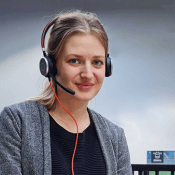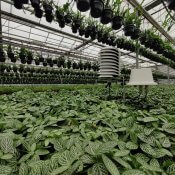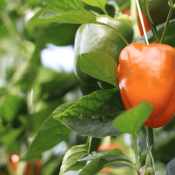Solving the food crisis will have to be collaborative
Practically every article about agricultural technology opens with the statistic about how many people we’ll have to feed in X year. (By 2050, a global population of 9.8 billion will demand 70% more food than is consumed today.)
So how do we adapt and keep going?
Some claim to have the exact answer, but let’s be honest: it’s unlikely that there’s one singular solution. But looking back at human history, it appears clear no one will do it alone, in a vacuum.
Sharing stories about growers’ innovation and achievements is important. Shared, collaborative agricultural development always has been. Across the globe, fairs, festivals and holidays celebrating harvests continue to be a part of local cultures. Agricultural exchange and development is at the core of modern society. It’s how culture is built, transmitted and transmuted. It’s how we adapt and keep going.
No individual will solve the oncoming challenges of feeding this planet. In order to succeed, growers, researchers and technologists (among others) will have to tackle these problems together.
Big agricultural organizations will doubtless contribute significantly. Traditionally, they’ve been the ones with the resources to collect and analyze data in the most sophisticated ways. But accessible agritech is changing that.
If there’s one thing I’ve learned working at 30MHz, it’s that the “big guys” don’t have a monopoly on innovation. Any agribusiness, any grower, of any size, can discover new methods to make the most of their resources. But they need two things to truly make an impact:
The ability to gather accurate data on their crops (without exuberant costs) [check.]
and
the ability to selectively share that data with peers, researchers, consultants and their communities [check.]
For growers, data on crops and the effect of their growing strategies is valuable intellectual property. That’s why our customers are the sole proprietors of their data, free to download their information in a convenient CSV at any time.
We know, though, that full control over your data is the freedom to collaborate and share on your own terms. With social features, we give customers the power to decide what they share (sensors, widgets, dashboards), with whom, and to what degree. Innovation that once traveled across trade routes, and met wherever two cultures crossed paths, can now happen digitally on a global scale.

(in this image: identifying the ideal moments for irrigation based on sensor data)
With shared graphs and data visualizations, we’ve seen growers exchange best practices and insights with peers an ocean away— leading to energy savings, lower costs, and more sustainable agriculture.

(in this image: a pointed microclimate sensor monitors crop-level conditions)

(in this image: crop-level insights on rootzone and VPD help customers prevent over- and under- watering)

(in this image: preventing unnecessary disease risks with insights on dew point)

(in this image: identifying cold storage malfunction with real-time data)
You don’t have to be a multinational to be forward-thinking. You don’t have to be the biggest player in your industry to innovate, and develop sustainable, productive approaches to your crops. You don’t have to be a unicorn to be an early adopter of cutting edge technology.
Who’s going to feed the world? My money is on innovative growers of all sizes, sharing knowledge based on data from their own crops and environments, helping make the most of their resources.
Joanna Madej oversees Marketing + Communications at 30MHz


30MHz is typing… Our extended support team is ready to chat!
At 30MHz we think it’s important that our users can use our platform in an optimal way. At times you may have questions and you would like some help from our support team. Email and our support page filled with helpful articles were your go to’s. But we thought it was time for something extra… ...Read more
New 30MHz connect casing: How we protect your tech
To make sure your dataflow is fully protected, 30MHz introduces a new connect casing: waterproof, dust proof and even resistant to hits. This special shield will last longer and ensure a reliable dataflow from the connected sensor. What does that full protection mean? That’s what we will explain in this article. Watertight: resistant to wetness ...Read more
Smart assistant at work
After the launch of the smart (AI) assistant at GreenTech, the first growers have started using this new feature. The assistant helps them gain insights from their data faster and supports daily decision-making in the greenhouse. Growers report that they use the assistant for: Calculating differences in water content throughout the day Quickly identifying trends ...Read more


